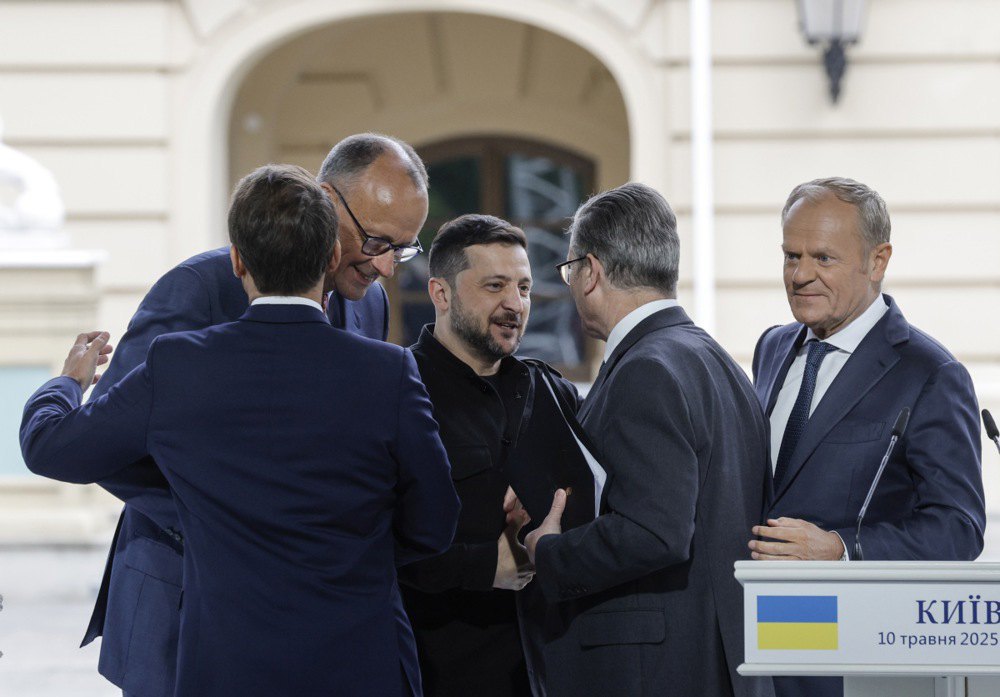
We are living in a period of profound transformation in international relations and the global economy. In recent months, the pages of global and Ukrainian publications have been full of texts about US President Donald Trump abandoning US leadership in the world. However, this did not start with Trump's second term in office - the US has been gradually losing Pax Americana due to a number of mistakes over the past three decades. These include the obvious defeats in Iraq, Afghanistan, Syria, and Libya, and the loss of absolute leadership in the global economy. The old world order, based on the hegemony of the United States after the end of the Cold War, is becoming a thing of the past.
A new system of international relations based on multicentricity is still being formed. This process is accompanied by intensified geopolitical competition, regional conflicts and a reassessment of the role of key international actors. The restructuring of the international relations system has created an opportunity for Russia's full-scale aggression against our country. Ukraine will be able to use the changes in the system of international relations and find its place in the new world if it understands the global and regional dynamics of this transformation, as well as the motivations and policies of key players.
Make America Great Again and Made in China
Donald Trump's administration is abandoning its role as a security guarantor in Europe, plans to gradually reduce its military presence on the continent, is sceptical about NATO, and is shifting responsibility for supporting Ukraine to the EU, the UK, Japan, and Canada. The United States perceives China as its main threat and is reorienting its forces to confront China. This motivation is the basis for virtually all of the White House's foreign policy activities in recent months, including
- the accumulation of armed forces and expansion of military infrastructure in the Indo-Pacific region, reduction of spending on ensuring the security of allies in Europe and potential cuts in the Ministry of Defence's budget to maintain the existing infrastructure, in particular, the planned merger of the European (EUCOM) and African (AFRICOM) commands into a single one;
- US pressure on Panama, Greenland and Canada to reduce Chinese economic and political influence and strengthen its positions in key regions for its own security;
- imposing tariffs on almost all trading partners and a 145% tariff on imports from China to weaken China's economy and restore American industry and bring manufacturing back to the US.

Over the past decades, China has gained a monopoly on a number of key technological areas, such as electric vehicles, batteries, electronics, solar energy, and rare earth metals; it competes on an equal footing with the Western world in the fields of artificial intelligence, quantum technologies, semiconductors, robotics, and biotechnology. China's share of global industrial production is 25-30%, the highest among all countries and twice as high as that of the United States. Beijing controls supply chains, rapidly introduces and scales new technologies, and is a leader in research and development in a number of strategically important areas.
China and its leader, Xi Jinping, are seeking to change the international political system based on Western values and the international economic system backed by the dollar. In the Chinese worldview, state sovereignty should be the most important phenomenon, even if the state does not respect democratic values and human rights. And it is in such a world that China's central role will be guaranteed, and global institutions and norms will be formed on the basis of Chinese ideas about the world, politics, and economic development. Beijing is expanding its global influence and promoting its vision of the world through the Belt and Road Initiative, the Global Development Initiative, the Global Security Initiative, the Global Civilisation Initiative and the concept of the Community of Shared Destiny.
The United States cannot win the confrontation with China alone, so it will maintain a high level of cooperation with Europe, although it does not plan to pay more for its security. However, the US tariff pressure on the EU is likely to end in a compromise trade deal. Washington needs Brussels to take its side if the confrontation with China escalates, in particular, to join the pressure on Chinese exports.
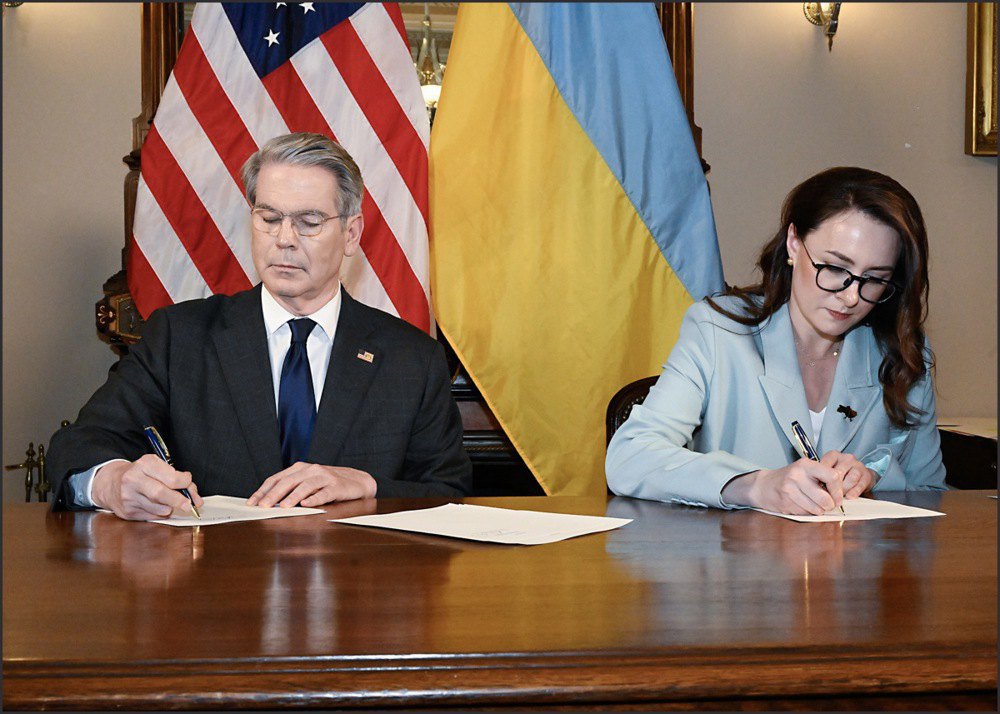
By signing a minerals agreement with the United States, Ukraine has the opportunity to attract significant American investment. Kyiv needs to prove to Washington that Ukraine is a key partner in diversifying global supply chains, ensuring logistics between Europe and Asia, and a military counterweight to Russia in a region whose economic leaders are completely unprepared for a potential attack.
The EU on the way to the third pole of power
In the context of the USA's abandonment of the role of the leader of the united West, the EU is facing a number of new challenges, and the solution of the old problems of the Union is only becoming more urgent. The issue of European security is becoming particularly acute due to the fairly justified US demands to increase defence spending, the outlined prospects for the withdrawal of US troops from Europe, the US president's team's scepticism about NATO Article 5 and the EU's shifting of responsibility for economic, military and technical support and security guarantees to Ukraine. All these circumstances are forcing the EU to look for ways to achieve strategic autonomy.
Europe, which has long benefited from the US security umbrella, spending little on defence while spending hundreds of billions on environmental and social justice initiatives, is gradually increasing its defence spending. At the same time, the EU has not come close to maximising its military and technical support capabilities. Kyiv should use Trump's shock therapy to push the EU to provide more military and technical assistance.
After 30 years of neglect, lack of significant investment in research, large government contracts, and green regulation, Europe's defence industry is only gaining momentum. This process is slowed down by bureaucratic problems and high production costs in the EU. Only 20-25% of the weapons that Ukraine receives from the EU are produced in the EU, the rest are purchased outside the EU.
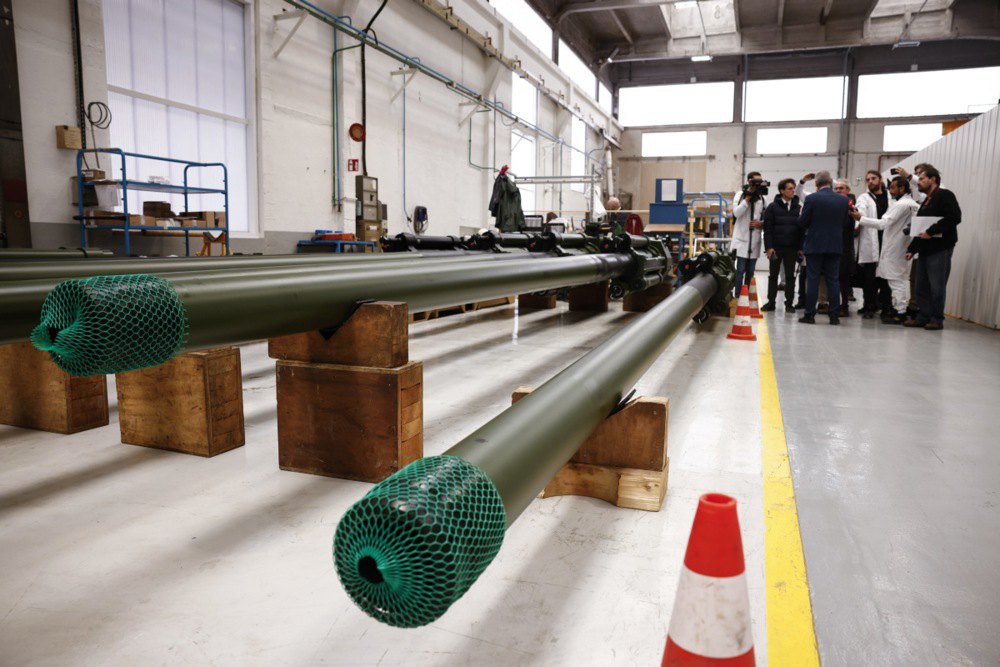
Therefore, in the context of the slow recovery of the defence industry in the EU, the solution should be to strengthen the capabilities of the Ukrainian one. While the EU has the money but no production facilities, Ukraine has the facilities but no money. There is already a solution - the so-called Danish model, where donors finance the purchase of arms from Ukrainian manufacturers, which, among other things, is much cheaper than production in the EU.
The creation of joint ventures and the construction of factories of European defence companies in Ukraine and Ukrainian ones in Europe is another important area of cooperation that benefits both Ukraine through increased defence capability and the EU countries through cheaper production. Rheinmetall, Czechoslovak Group, and PGZ have already taken this route, the latter partly relying on Ukrainian labour in Poland.
Ukraine can play an important role in the EU's emergence as an independent pole of power. Ukraine's significant defence industry potential, integrated into European production chains, would help the EU build up its defence capabilities faster and more efficiently.
In addition to security, the EU faces another major challenge: the economy. In 2008, the EU and the US had equivalent GDPs: $14.2 trillion and $14.8 trillion respectively. In 2025, the EU's GDP is expected to reach $20 trillion, while the US GDP is expected to reach $30 trillion. China's GDP grew from $4.6 trillion to $19.5 trillion. If these trends continue, the EU will soon become the third largest economic power in the world. Europe, focusing on the environment, welfare state and social justice, has significantly weakened its industry and slowed down the development of innovations.
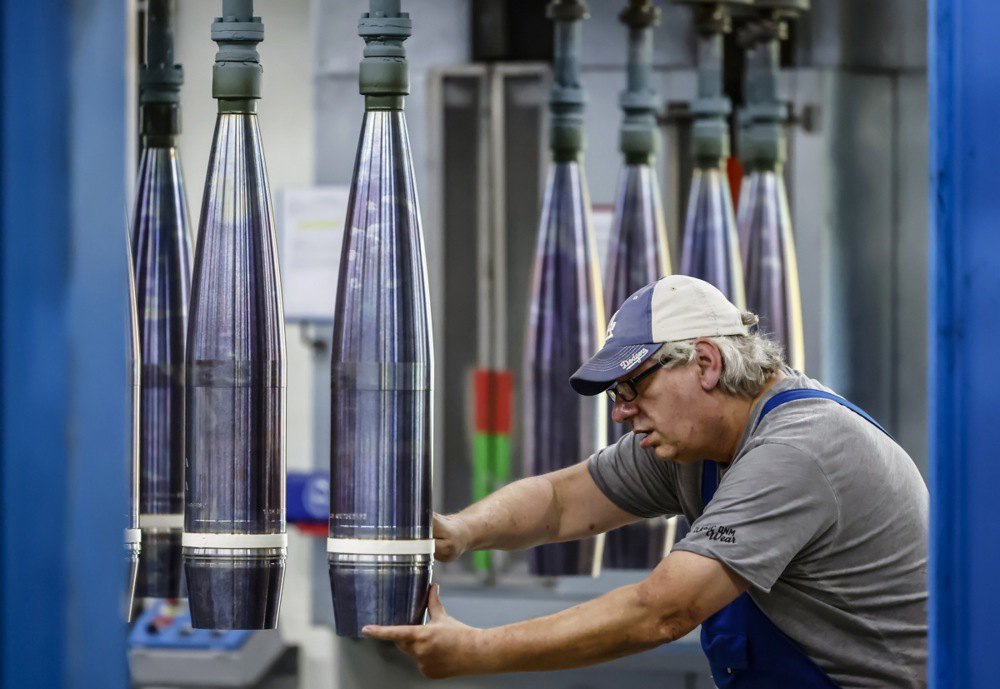
Last September, former European Central Bank President and former Italian Prime Minister Mario Draghi presented an action plan to improve the EU's economic competitiveness, based on the need to attract significant funds from EU countries for investment. Mario Draghi calls for an annual investment of EUR 800 billion (5% of GDP) in the development of key economic sectors and R&D to bridge the innovation gap with the US and China.
The European Commission has presented a plan to develop Europe's defence capabilities - REARM Europe - which proposes to activate an exceptional financial arrangement that would allow EU countries to increase their military spending without risking fines for breaching EU debt limits and spend an additional €800 billion on defence orders and investments over four years.
With the EU on a course to restore its economic and defence capabilities, Ukraine should not only rely on economic aid, but also offer the Union mutually beneficial cooperation. Ukraine needs the EU, and the EU needs Ukraine. Investments in the Ukrainian economy, which will become part of the Union in the foreseeable future, can boost the growth of the European economy as a whole.
Modernising and reorganising Ukraine's neglected industrial sector will cost the EU tens of billions of dollars. However, this will be an investment in the real economy, in expanding the industrial potential of the Union itself, given Ukraine's expected accession in the medium term, and the return on investment will be quite significant even at the European level. In addition, the managers of funds and contractors may be mainly European companies, which means that a significant part of the funds will return to the jurisdiction of the countries that will allocate them.

It is critical for Ukraine to participate in the new technological order, in knowledge-intensive production and innovative sectors of the economy. The EU is launching its own artificial intelligence projects to compete with OpenAI, Google AI, and DeepSeek, and the Ukrainian IT sector can be involved in this process. In general, the Ukrainian IT sector, aircraft, rocket and space industries have significant potential that can be realised with investment and integration with European partners. It is the integration of the Ukrainian economy, its resources and human capital into the European space that can become a driver of economic growth for the entire EU.
Japan and Ukraine - How to Solve Each Other's Problems
A traditional phenomenon in any system of international relations is the gradual transfer of economic productivity from developed to developing countries. The demographic indicators of developed countries are declining, unable to support economic growth, and Japan is one of the biggest victims of this trend. Tokyo is responding to this by making significant investments across the Indo-Pacific region. Japan has the third largest financial assets in the world, estimated at around $12 trillion, and is even ahead of China in terms of investments in ASEAN countries. Ukraine should gradually move from just receiving economic and humanitarian aid packages to a new level of cooperation with this country, offering itself as an alternative investment destination.
Japan has repeatedly expressed its interest in Ukraine's reconstruction process by providing financial assistance and cooperating in the field of technology. One of the potential instruments for attracting investment from Japan to Ukraine is the Japan International Cooperation Agency (JICA), which has already expressed its readiness to take over some projects previously implemented under the auspices of USAID. JICA has an impressive portfolio of projects in East and South Asia and Africa, particularly in the areas of logistics and energy infrastructure.
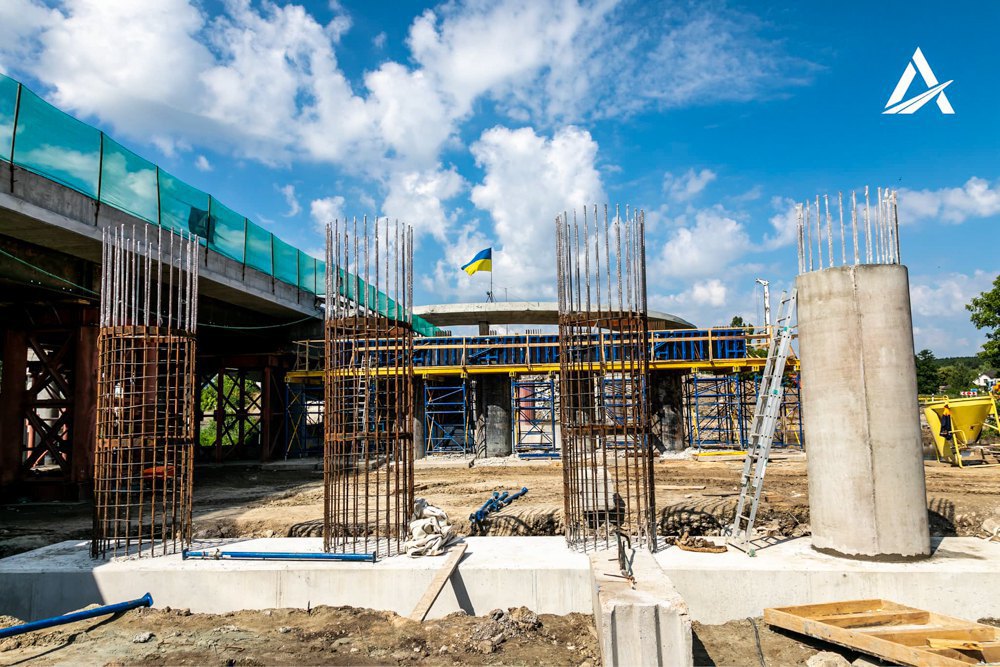
Ukraine's prospects are not only in attracting investment - its favourable geographical location allows the country to offer itself as a logistics hub between the EU and Japanese markets. In the face of a potential decline in exports to the US due to the Trump administration's tariff policy, Japan may redirect some of its high-tech exports to Europe. A shorter logistics leverage through the ports of Greater Odesa would allow for a cost-effective increase in trade with Europe, while boosting Ukraine's economy.
Ukraine as a middle power
To guarantee its rightful place in the new world order, Ukraine should embark on a gradual transformation of its relations with key foreign policy partners - from a recipient model, in which the state exclusively accepts economic, humanitarian or military-technical assistance, to a model of mutually beneficial cooperation. It is necessary to position ourselves as a reliable economic and security partner with whom we can implement significant and long-term projects. Of course, it is necessary to create conditions for attracting foreign capital, deregulate and de-shadow the economy, maintain a good business climate, and reform the judiciary, tax and customs. If we want to have a successful, economically developed country, then in this changing time of threats and opportunities, we must do everything to change the paradigm of Ukraine's foreign policy and the perception of Ukraine abroad.
Transformational processes in the modern international system are leading to an increase in the importance of the so-called middle powers - countries that are able to effectively exercise their power potential at least on a regional scale, have cumulative resources (those that have added value at a particular moment in time and are directly convertible into strong positions) and a clear understanding of their own foreign policy goals and ambitions.

Given the uncertainty of the future configuration of relations between the US, China, Russia and the EU, traditional neorealist strategies of bandwagoning or building coalitions against the stronger (outer balancing) pose many risks for medium-sized states, given the decline in autonomy. Instead, an alternative is to combine the development of self-sufficient defence capabilities (inner balancing) with a hedging strategy, which implies limited cooperation with all possible poles without a strategic orientation towards partnership or confrontation with one of them. Such formats emphasise the importance of establishing horizontal ties between medium-sized actors as a means of levelling out the asymmetry and unpredictability of vertical contacts.
For Ukraine, which is at war with a contender for the status of a pole of the international system, the situation is uniquely difficult, as it narrows the possibilities for a full-fledged hedging policy and critically deepens the asymmetry of relations with stronger partners, primarily the United States. However, cautious optimism is inspired by Ukraine's successful progress in defence capabilities and the prospect of achieving a greater role in the region through cooperation with Turkey and other important players in Eastern and Northern Europe, including the United Kingdom.
In order for Ukraine to become a middle power in the international arena - the vision of the Kyiv Institute for National Interest - a long-term and systematic strategy is needed that combines the development of its own defence capabilities and economy with flexible bilateral diplomacy and the use of multilateral platforms to promote its interests.
In order to achieve this vision, the team of the Kyiv Institute for National Interest aims to create high-quality analytics and well-grounded recommendations that will contribute to the realisation of Ukraine's national interests, the interests of Ukrainian society and business. In particular, to analyse global and regional trends and develop recommendations and ideas that will contribute to the emergence of Ukraine as an influential and successful middle power, realising its potential in a new, complex, but also full of opportunities.
The Kyiv Institute for National Interest is a non-governmental think tank that studies international relations and domestic politics through the prism of Ukraine's national interests.








